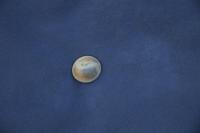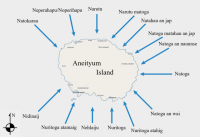This page has returned 30 entries
nupsi itai
n. corn
bookmarknupsin
n. seed
bookmarknupsin hudain

nupsin itai
n. seed
bookmarknupsinhodaeñ

nupunyepec

nup̃ut

nuput, noho’ich

n. cultivated anthropogenic landscape (lawn and planted trees). (collection: Keith E. Clancy #6655)
bookmarknuputreiki
n. kind of tree
bookmarknuputuligighap
n. stem of coconut leaf
bookmarknupyihet
n. new moon
bookmarknuripapa
n. wind-related term; no definition provided
bookmarknusjai um legad
n. kind of sugarcane
bookmarknusjau
n. kind of sugarcane
bookmarknusjau

n. tree fern to 5 m tall, fronds 2. 5 m long (collection: Michael J. Balick #5014)
Example: Trunk of this plant is used to make food. Cut the stem in 2-3 foot pieces, peel the outer stem, put the peeled stems in an earth oven to cook for the afternoon through the night--about 12 hours. It will be ready the next day. Peel off any remaining fibrous tissue, slice the stems and eat. They are said to taste like sweet potato. The young fronds are boiled for 5 minutes and coconut milk is added, this mixture is then eaten. It is important to collect only the inrolled fronds that have not yet fully opened. The fronds are used to make temporary houses when camping in the bush. They are used to make a roof. To make a cassava grater, take 2-3 pieces of the frond stype, connect them together by piercing them on the sides with a piece of bamboo or any stick such that they are held together in parallel fashion, and use this to grate uncooked cassava to make lap-lap and to grate banana or any food that needs to be processed in this way. The thorny part of the stipe grates the food.
bookmarknuueced
n. a brook that is dry in dry weather
bookmarknuwuneto

nwujvaeñ

n. vine climbing up ficus wassa, growing in dense rainforest. (collection: Gregory M. Plunkett #4016)
Example: 1. The vine is use to lash roof rafters to house posts. The vine is collected from the forest and coiled ina figure 8 pattern. It is then heated over a fire before fastening the rafter to the post. 1 minute of heat is sufficient, before one immediately uses the vine.
bookmarknwujvaeñ

n. vine climbing on Myristica fatua, growing in primary rainforest. Fruits green. (collection: Gregory M. Plunkett #3615)
Example: This vine is used to make rope. Collect the stem, roll it in a figure 8, heat it on a fire and tie it on a house while the vine is still hot. Weave a ?? net to catch fish.
bookmarknyihivac

n. tree, 6 m tall (collection: Gregory M. Plunkett #3263)
Example: 1. A "calendar plant". When this flowers in the bush, and people are making their gardens in that area, it means the garden is ready to harvest. 2. Firewood, calendar, and message plant – for people who live up in the forest can see this coastal plant and when it flowers it is a good time to go fishing or to move to the coastal area for a few weeks to relax. July-August. Tide is low so everything is exposed so it is a good time to fish for there, 2 months. 3. Flowers have a nice nectar, sweet, kids drink.
bookmark



